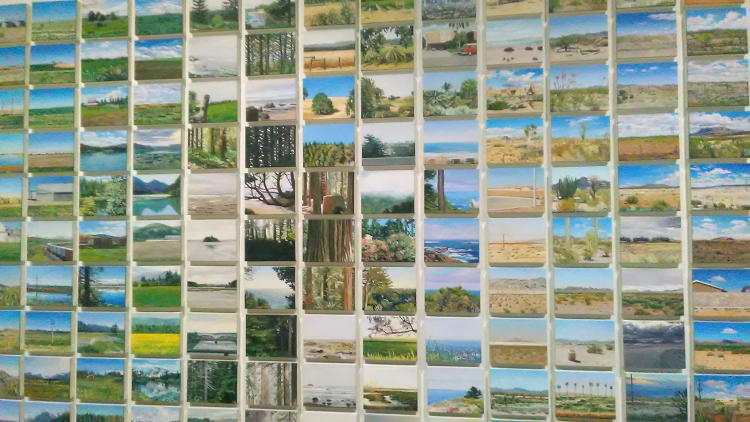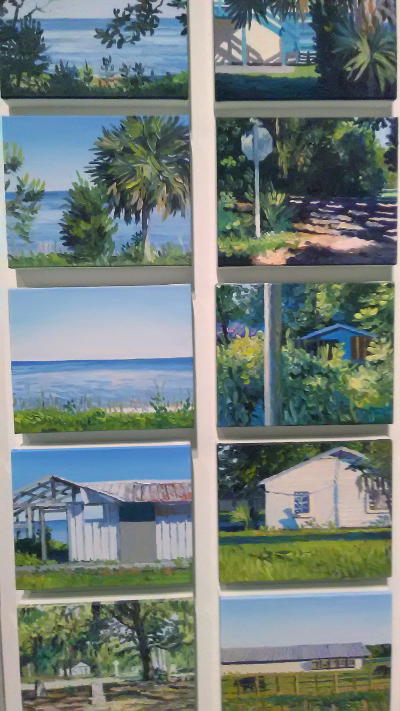Let’s start the new year off right with a rambling collection of uninformed opinions that no one asked for, shall we?
Walkabout podcast – Modren Art
Some of the things we heard about in the audio:
Georgia O’Keeffe, of course.
My own ‘version’ of the approach. Not really intended (and even less so now,) but just happened that way.
And Cynthia Daignault, who impressed me the most. Definitely check this link out. The exhibit that we saw is entitled, “Light Atlas” and is featured on her site. I’ve included a couple of my own photos of it below, though it’s better and a little more complete at that link.

 I was shooting with my [*blech*] my smutphone, without the benefit of a flash, so I ask that you excuse the quality of these images. No, wait, never mind – it’s intended to look this way; it’s incisive yet whimsical commentary on technology from a post-neo-farcical standpoint…
I was shooting with my [*blech*] my smutphone, without the benefit of a flash, so I ask that you excuse the quality of these images. No, wait, never mind – it’s intended to look this way; it’s incisive yet whimsical commentary on technology from a post-neo-farcical standpoint…
One particular effect that I noticed, which may or may not hit others as well, was that I thought I almost recognized several of her painting locations. The likelihood of her actually choosing anyplace that I knew as a subject for one of the panels is extremely low; instead, I suspect that what she chose were scenes that had a fair commonality with many regions of the country, representative of, for instance, certain building styles or ecology.
Again, the combination of minimal brush strokes and detail with the notable accuracy in colors and shading just captured my attention, pure efficiency (though I suspect that’s not a descriptor most artists seek.) Very cool.
There was one aspect that I neglected to mention in the podcast, one of the other photographs that we saw early on. It was a scene of an amusement park at dusk, lots of detail and complication which communicated the popularity and crowds. But right away, I could see the evidence of digital manipulation, with the streaks of a car’s taillights curving through the people, ostensibly a time exposure of several seconds. Yet only a few of the people themselves were blurred even slightly, while an ascending roller-coaster train and a freaking plane in the air remained sharp, evidence of a shutter speed no slower than 1/30 second. To me, that’s a significant alteration which no longer makes it a photograph, but instead a composite or digital creation – this doesn’t necessarily make it less artistic, but it does take it out of the realm of strictly camera work. This is becoming more common, especially with astronomical landscape images (the ones with a distinct and elaborate starfield appearing above a sharp and well-exposed field or tree or whatever, next to impossible to accomplish in one frame,) but I personally still opt for such things to be clearly labeled as manipulations, if only to distinguish them from the in-camera shots that really do take a bit of skill and planning.
But yeah, go ahead and say it: “Hey, Al, at least they’re taking some photos!” I deserve that…




















































